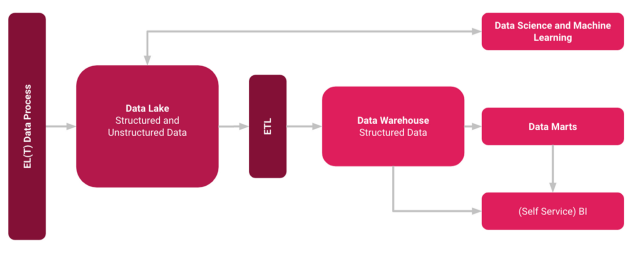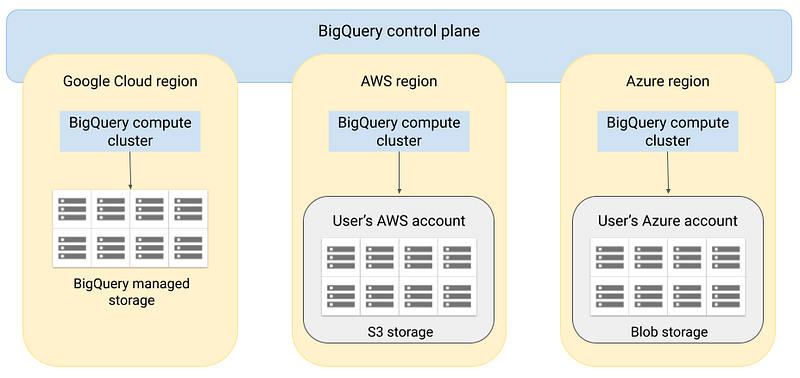Understanding the Differences Between Data Lakehouse and Data Lake
Written on
Chapter 1: Introduction to Data Storage Solutions
As traditional Data Warehouses are increasingly replaced by modern, often cloud-based systems like Data Lakes, new challenges have emerged. A Data Lake serves as a vast repository for all types of data, often in raw form, making it less suitable for Self-Service Business Intelligence (BI) tools. This is where the concept of the Data Lakehouse comes into play, acting as a hybrid of Data Lakes and classical Data Warehouses.
Section 1.1: Data Lakes and Data Warehouses Explained
Data Lakes and Data Warehouses are well-established concepts in the realm of Big Data storage, but they are not interchangeable. A Data Lake is primarily a large storage space for unprocessed, raw data, while a Data Warehouse is a structured repository that holds processed data tailored for specific uses.
While Data Warehouses typically employ the traditional ETL (Extract, Transform, Load) process alongside structured data in relational databases, Data Lakes utilize paradigms such as ELT (Extract, Load, Transform) and a schema-on-read approach, often handling unstructured data.

Section 1.2: Defining the Data Lakehouse
A Data Lakehouse is more than just a simple integration of a Data Lake and a Data Warehouse. It merges elements from both, along with specialized storage solutions to facilitate unified governance and streamlined data movement. From my experience, setting up a Data Lake can often be accomplished more swiftly. Once all necessary data is accumulated, a Data Warehouse can be constructed on top as a hybrid solution.

This innovative architecture makes traditional, rigidly structured Data Warehouses a relic of the past. It significantly speeds up the creation of dashboards and analyses, fostering a more data-driven culture. Utilizing new Software as a Service (SaaS) offerings from the cloud, along with methodologies like ELT, further accelerates this process.
Chapter 2: The Appeal of Hybrid Systems
This architecture makes cloud platforms such as AWS, Google Cloud, or Azure particularly appealing. They allow for the use of object storage solutions like S3 and Cloud Storage in conjunction with traditional databases as a Data Lake, while also integrating with existing data warehouse technologies such as Google BigQuery, Azure Synapse, or AWS Redshift. Thus, the Data Lakehouse can be effectively operational.
In the first video, titled "Data Warehouse vs Data Lake vs Data Lakehouse," you will gain insights into the core differences and functionalities of these data storage solutions, enriching your understanding of their roles in modern data management.
If necessary, businesses can even opt to rely solely on these new data warehouse technologies, which offer columnar and NoSQL functionalities along with interfaces and query capabilities for other database systems, reducing the need for data transfer. A prime example of this is BigQuery Omni, which allows querying of data across various cloud platforms.

In fact, BigQuery Omni provides a cohesive management interface through Google Cloud, enabling users to utilize their existing Google Cloud accounts and BigQuery projects. You can execute standard SQL queries in the Cloud Console to access data in AWS or Azure, with results displayed seamlessly.
The second video, "Data Lakehouse vs Data Lake vs Data Warehouse | What's the Difference?" delves deeper into the distinctions among these systems, providing valuable context for their respective functionalities and integrations.
Summary
Ultimately, the discussion is less about the competition between Data Lakehouses and Data Lakes, and more about the fact that Data Lakehouses are fundamentally built upon Data Lakes. Various SQL and NoSQL databases serve as storage for raw data, which can subsequently be processed and analyzed using contemporary Data Warehouses. Hybrid technologies like Google BigQuery and similar solutions offer comprehensive capabilities from a single source, enabling direct access to other systems and platforms through SQL.
Sources and Further Readings
[1] Talend, Data Lake vs. Data Warehouse
[2] IBM, Charting the Data Lake: Using Data Models with Schema-on-Read and Schema-on-Write (2017)
[3] AWS, What is a Lake House Approach? (2021)
[4] Google, What is BigQuery Omni (2022)